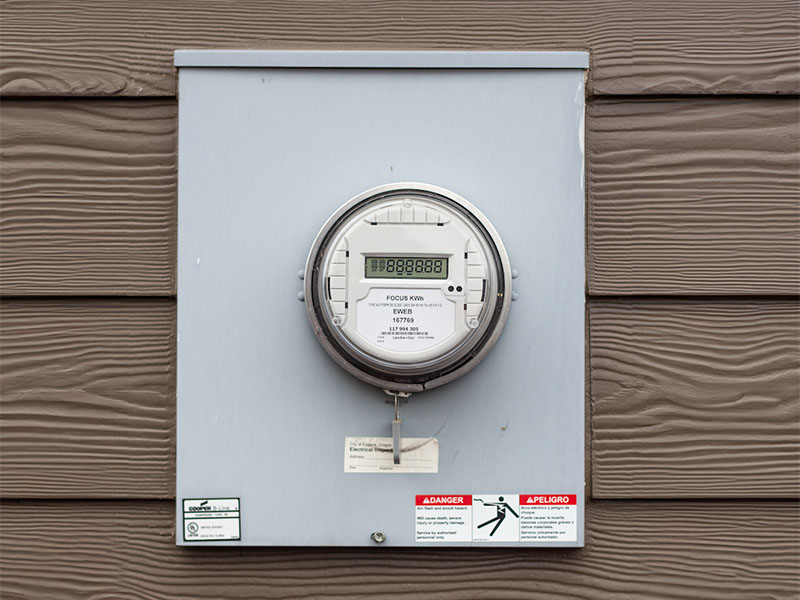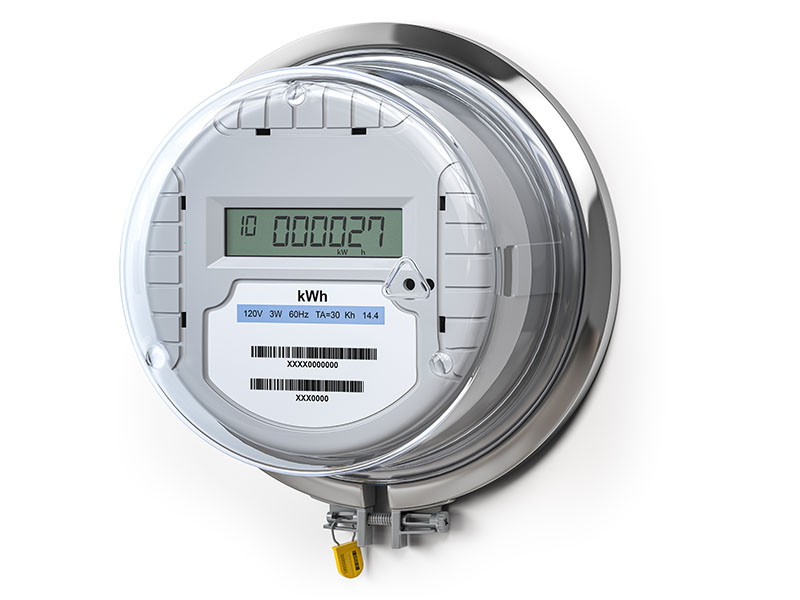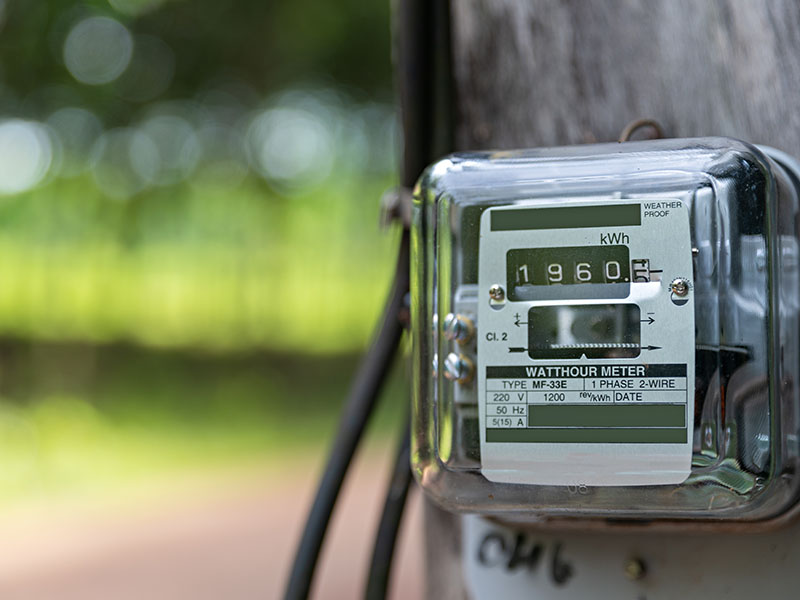Overview
The electrical metering approach for affordable housing rental properties impacts utility costs, physical space requirements, administrative burden, and rental income. Projects have two options:
-
A utility house electric meter for the owner-paid loads, with utility residential meters for each apartment
-
A utility master electric meter for the entire building, with a property-owned submeter for each apartment; submeters can also be added for commercial tenants or other critical loads.
Building codes and utilities can impose specific electric metering requirements. These design constraints should be identified during the concept or schematic design phase.

|

|

|

|
Technology and Design
Utility-owned residential meters
Benefits:
-
Reduced administrative burden: In this scenario, residents pay the utility company directly and the building owner is not involved with utility charges except for the house meter(s). Billing functions, resident payment, and service issues are all handled by the utility company.
-
Lower construction costs: The initial cost to install utility meters is typically lower as the owner is only responsible for providing the meter sockets; the meters themselves are typically provided and installed by the utility company. This results in an overall lower cost during construction.
Drawbacks:
-
Meter space: Depending on the jurisdiction or building layout, the project may not be able to install meter banks on the exterior of the building. Dedicating real estate within the building for meters reduces the available area for other uses. The area needed for utility meters is significantly larger than the space needed for submeters. In cases where the utility meters banks are required to be on the exterior of the building, this can create design constraints around exterior doors and windows.
-
Data sharing: When utility meters are in the resident’s name, collecting apartment consumption data can be time intensive. Some utilities offer auto-benchmarking services that aggregate all building meters and report out whole-building data. However, for buildings served by utilities that do not offer this service, it is often necessary to secure signed utility release waivers from each resident. If this is needed, it is recommended to make waiver signatures part of the standard lease-up process.
-
Utility cost increase: Individual apartment utility meters typically fall under the small residential rate structure. Compared to commercial and secondary general rates for whole multifamily building metering, the effective whole-building residential rate can be 20% higher or more on a blended basis. This is partially due to monthly residential meter charges across all apartments.
Submeters
Submeters are property-owned meters that electronically transmit consumption data. This data can be used by property management or a third-party billing service to charge residents for apartment electricity use.
Benefits:
-
Data sharing: Since all the building’s utilities are captured in meters paid directly by the owner, sharing building energy data with third parties is simplified.
-
Solar photovoltaic (PV): A master building utility electrical meter with submeters allows for larger solar PV systems and improved economics. Onsite PV can be sized up to the entire building load (as space constraints allow.) Also, connecting to a single meter reduces installation costs.
-
Reduced utility costs: With a whole building master electric meter, multifamily projects are typically under a commercial or secondary general rate structure. Even with a demand component, reduced meter fees typically result in an effective building rate that is at least 20% less than projects with residential utility meters for each apartment.
Drawbacks:
-
Increased administrative burden or cost: If the project is using submeter data to bill residents for apartment electricity use, property management either needs to hire a third party or take on the billing function. In the event of non-payment, it becomes the responsibility of the property owner to collect these amounts. Similarly, any questions or concerns about metered usage are directed to property management instead of the utility company.
-
Additional maintenance: The responsibility for maintaining the submetering system lands on the property owner. If there are issues with the submetering equipment, it is the responsibility of the property owner to fix them. If consumption information isn’t gathered due to equipment outages or connectivity issues, the owner may not be able to bill for those usage periods.
The electric metering approach should be coordinated with CHFA’s utility allowance policy for Housing Tax Credit-supported projects. Especially when utilizing options 2, 3, or 4 (Actual Usage and Rate Estimate, HUD Utility Schedule Model, or Energy Consumption Model), the metering approach can impact utility allowance values by 20% or more.
